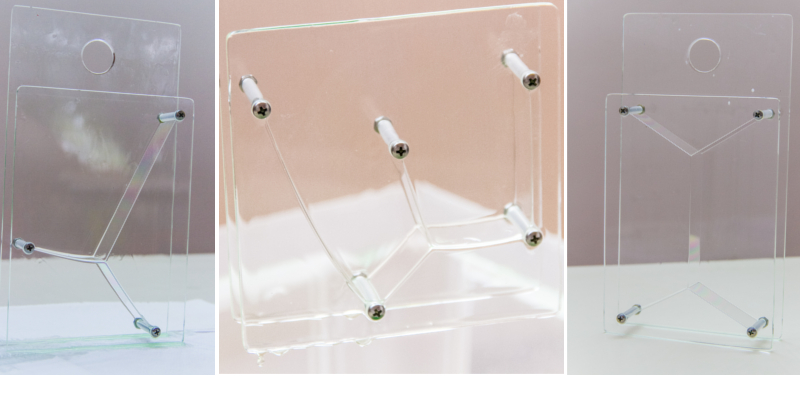STEINER TREE
Immerse the parts in the solution and remove them. The film walls form the edges of a graph, where the vertices are the pins and also a few more points that arise from the meeting of walls. If the graph does not have a closed loop then it is a tree and the edges are straight.
The trees obtained have the property of being (local) solutions of the Steiner Problem: right data vertices in the plane (the pins), find the path of minimum length that connects all the vertices. The additional vertices that appear these solutions are called Steiner points.
Always three edges come out of each Steiner point and make angles of 120 degrees to each other. the applications are evident in the design of electrical circuits, communication and transportation networks.

